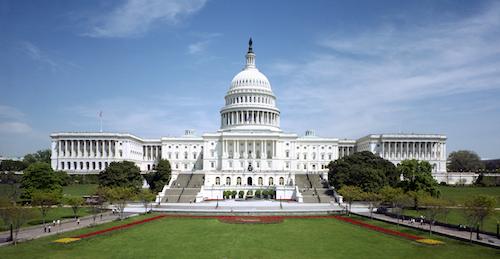Looking Back at the Push for National Right-to-Work

By Emily Leayman
This month, Reps. Steve King (R-Iowa) and Joe Wilson (R-S.C.) introduced national right-to-work legislation. The bill introduction reads:
To preserve and protect the free choice of individual employees to form, join, or assist labor organizations, or to refrain from such activities.
With Missouri becoming the most recent right-to-work state, employees in 28 states do not have to pay union dues as a condition of employment. The King-Wilson bill would benefit the remaining 22 states without right-to-work laws—including New Hampshire, where the state House rejected legislation on Feb. 16.
Aside from King and Wilson, seven other members of Congress have co-sponsored the national bill. “Our bill would protect workers by eliminating the forced-dues clauses in federal statute,” Wilson told InsideSources. “Right-to-work states, like South Carolina, have seen first-hand that job creation and economic growth comes from expanded freedoms.”
While state laws became possible after the passage of the Taft-Hartley Act in 1947, national bills emerged only in the 1980s. Since then, 24 bills have been introduced.
The newest bill is similar to ones King and Wilson have sponsored before. The legislation would restrict unions from imposing dues as a condition of employment. The legislation would amend the National Labor Relations Act and Railway Labor Act.
The first bill, introduced in 1983, is similar to later bills, although it only addressed the NLRA. Versions of the bill beginning in 1997 singled out provisions for railroad workers that required dues to be deducted from payroll.
Most of the bills never got past subcommittees. The closest a bill had to becoming law was in 1996, when the Senate did not have enough votes to overcome a potential filibuster. Other times bills just did not have enough support in Congress – especially with Democratic-controlled legislatures or a potential presidential veto.
There have been opposing bills that never gained traction. Rep. Brad Sherman (D-Calif.) introduced bills in 2014 and 2016 to repeal state right-to-work measures. These would be a complete opposite of national right-to-work, as union agreements would have the ability to make union membership mandatory. Like most of the right-to-work bills, these never got out of committee.
Today, with both a Republican president and Congress, right-to-work advocates are hopeful that the chances of a national law are stronger. President Trump endorsed right-to-work on the campaign trail.
“Similar legislation has been introduced in the past, but we believe that this year, the legislation could garner more support than ever before,” Wilson spokeswoman Leacy Burke told reporters.
As in the past, the bill is expected to draw fierce opposition. Unlike the 1996 bill, Senate Democrats can prevent a vote with a filibuster threat.
A more sure way forward is the confirmation of Supreme Court nominee Neil Gorsuch. A ruling that would have made the public sector right-to-work nationwide was last year’s Friedrichs v. California Teachers Association. The lower court’s ruling upheld the state union membership requirement after Justice Antonin Scalia’s death forced a 4-4 tie.
Another case involves three Illinois state employees fighting forced union dues. The case is currently in the 7th Circuit Court of Appeals in Chicago, but they may lose the appeal and send the case to the Supreme Court. A Supreme Court ruling would have potential to impact 20 million government workers nationwide.
The expansion of right-to-work has been tied with declining union membership. Richard Trumka, president of the AFL-CIO, said in a statement, “Right to work is a lie dressed up in a feel-good slogan. It doesn’t give workers freedom—instead, it weakens our right to join together and bargain for better wages and working conditions. Its end goal is to destroy unions.”
Yet state-level right-to-work victories show that American workers would benefit under a national law. Numerous studies have shown that states with right-to-work have higher economic growth, including income growth and lower unemployment.
Seventy years after state-level policies became possible under the Taft-Hartley Act, it’s time to guarantee union membership is voluntary anywhere in the U.S.





